Introducing Productboard Pulse. Exec-level insights into what your customers need, powered by AI.

Most product managers and leaders would agree that they aim to be customer-centric, and that they work hard to make that goal a reality. So why do 69% of teams surveyed in Productboard’s 2021 Product Excellence Report say that the products and features they release are not consistently well-received by customers?
To understand where most teams fall short, let’s step back and look at the three steps to creating products:
What many product leaders are missing, says Productboard’s Group Product Manager Sophie Lalonde, is attention to detail in that very first step: understanding customers’ needs.
That, Lalonde says, is where Productboard shines — and where Productboard’s team leverages its own software to accurately define problems and get maximum utility out of customer feedback. After all, it’s easy to go off your gut and skip that initial step, but Productboard enables your teams to really focus on problems before proposing solutions. (In other words, helping to enable the double diamond process.)
At the 2022 Product Makers Summit, Lalonde shared more about how Productboard “drinks its own champagne” to deliver solutions that customers love — or, how Productboard uses Productboard.
Defining problems, Lalonde notes, is truly the heart of making great products. In order to do it well, product teams must empathize with customers. They must understand the jobs customers need to get done, the problems they run into, their precise needs, and how they define their successes.
To gain that empathy and insight, Productboard uses continuous discovery to tap into customers’ perspectives. Essentially, Lalonde says, constantly asking their core persona about their work, their struggles and their successes — and putting it all into Notes.
“Every time a product manager or designer does a discovery call, they add the notes into Productboard [see Figure 1.1]. We link relevant insights in these notes to problem areas we’d like to solve. You can even filter and save these insights as a collection,” Lalonde said.

Figure 1.1
In addition to making notes after discovery calls, customer-facing teams at Productboard can easily submit customer feedback at any time using Intercom, Zendesk, Salesforce or Slack — whatever is most convenient to them, using whatever tools they’re already living in. Sales and customer success teams can share Gong snippets from calls with prospects and customers to provide key feedback and add more color to what they’ve heard. Then, thanks to Productboard’s integrations with these tools, product teams can use Reports to easily access that feedback all in one place while understanding where it’s coming from (see Figure 1.2).
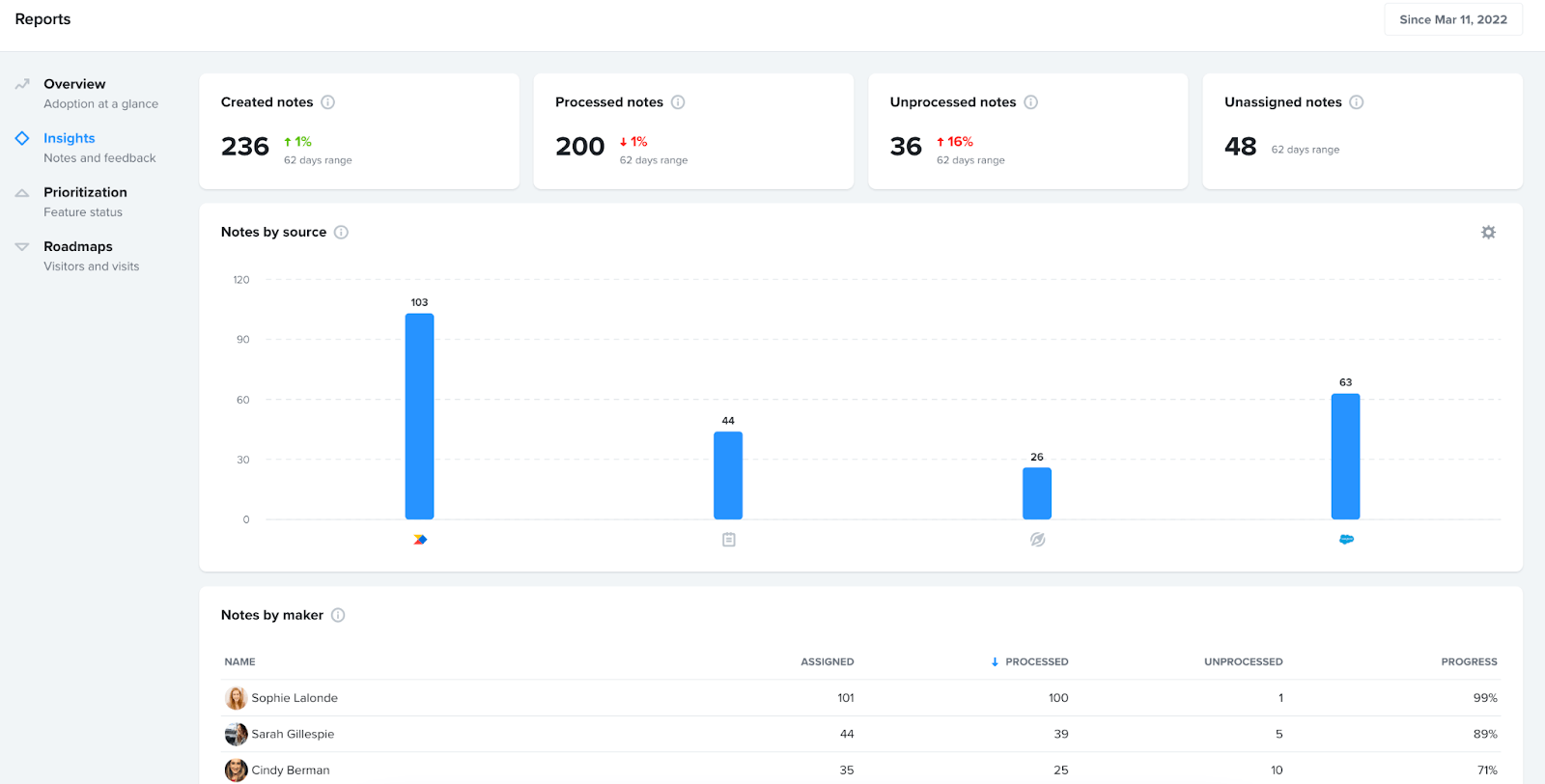
Figure 1.2
In addition to where feedback is coming from, the Productboard team also wants to understand who it’s coming from. Enter: the Insights Trends feature, which shows “trending segments” (like Enterprise, Technology, SMB, and more) as well as highlighting which segments are absent, in some cases driving the team to solicit more feedback from these missing segments.
For example, in Productboard’s “trending segments” (see Figure 1.3), there are more notes from “Power Users” than “Disengaged Users”—which isn’t surprising, Lalonde says, but can be important to be aware of depending on what the team is trying to accomplish. Filtering by segment can help highlight what a particular group is saying.
“If we want to keep a special eye out for what these disengaged users are saying, we can go back to the Insights board. We can filter by segment to see all these notes based off our imported cohorts from Amplitude, choosing disengaged users,” she said.
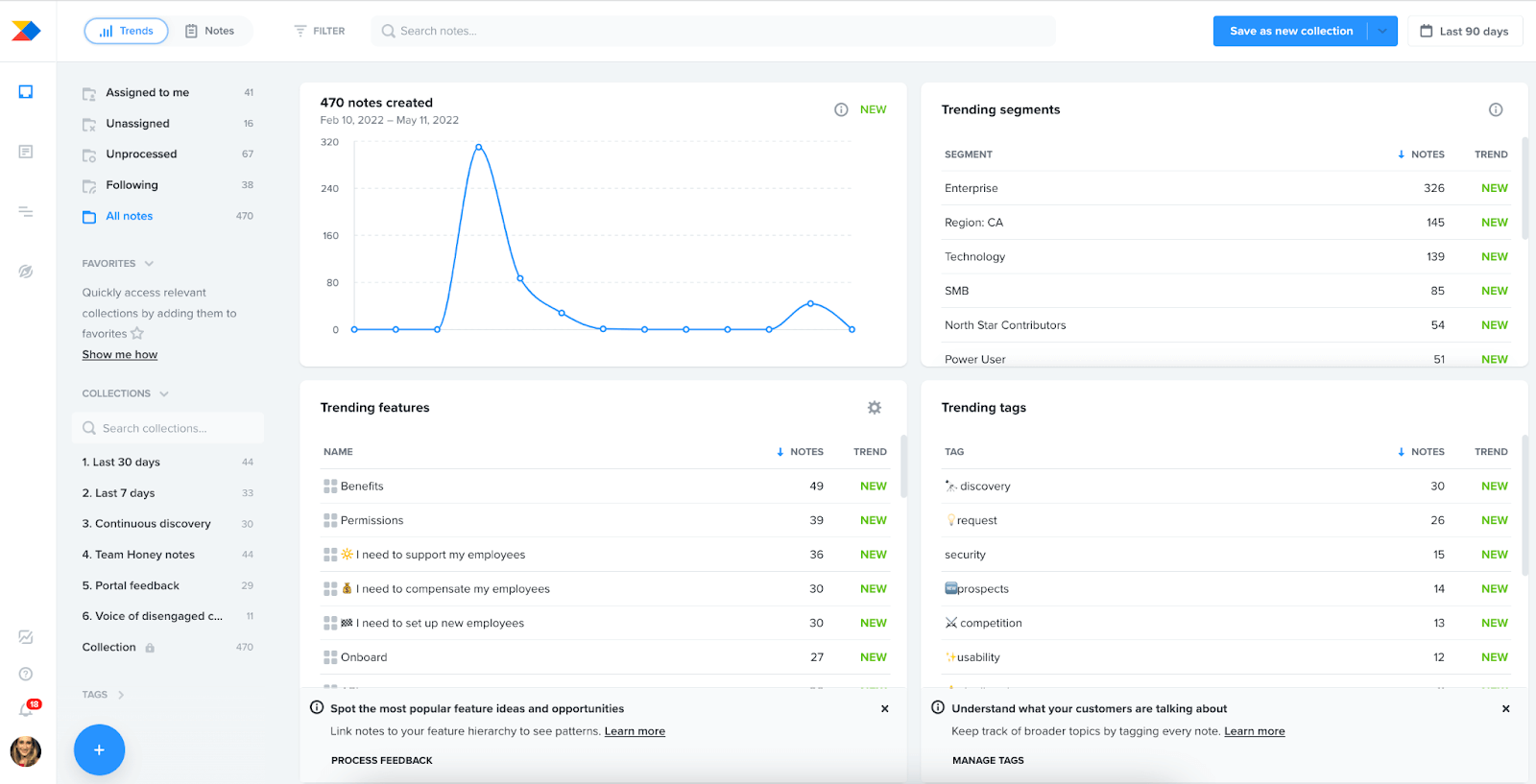
Fig 1.3
Seeing where the opportunities lie within the problems allows the Productboard team to learn what needs tackling first. In this view:
Take a look at this example, where the team may want to prioritize disengaged users over north star contributors:
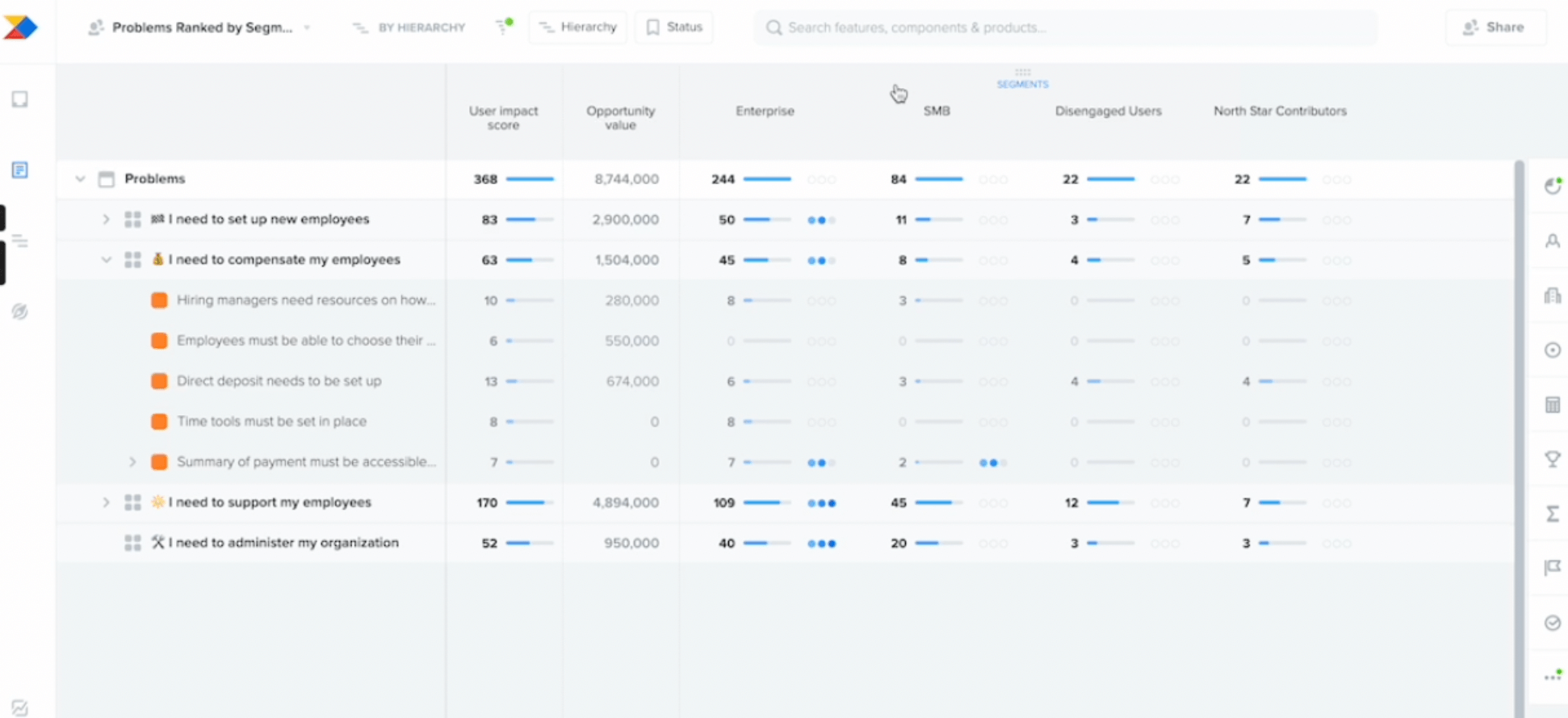
Through these steps, the Productboard team gains deep and nuanced insight into what customers are looking for and why, ensuring that the products and features being developed in future steps will actually meet their needs.
After capturing a wide-angle view of customer problems, the next step for the Productboard team is to figure out which solutions to prioritize. Here, too, Lalonde notes, the team optimizes Productboard’s functionalities to make sure that these decisions are strategic and focused. Here’s how Productboard does it.
There are many ways to set up a Productboard hierarchy — think of it like a filing cabinet for all of your products and features — but the critical part is separating problems and solutions, tracking them separately. This is how the team finds the problems they want to solve.
The next step is having a product executive issue three objectives and key results (OKRs) that should guide product teams. Each product team then works together to propose an objective for each of the customer problems that they’re seeking to address, mapping them to those top three OKRs. The product team does this all through the CompanyRoadmap (see figure 1.4). The product executive can go into Productboard and view the roadmap to determine if there are enough objectives that ladder up to each of the top three OKRs.
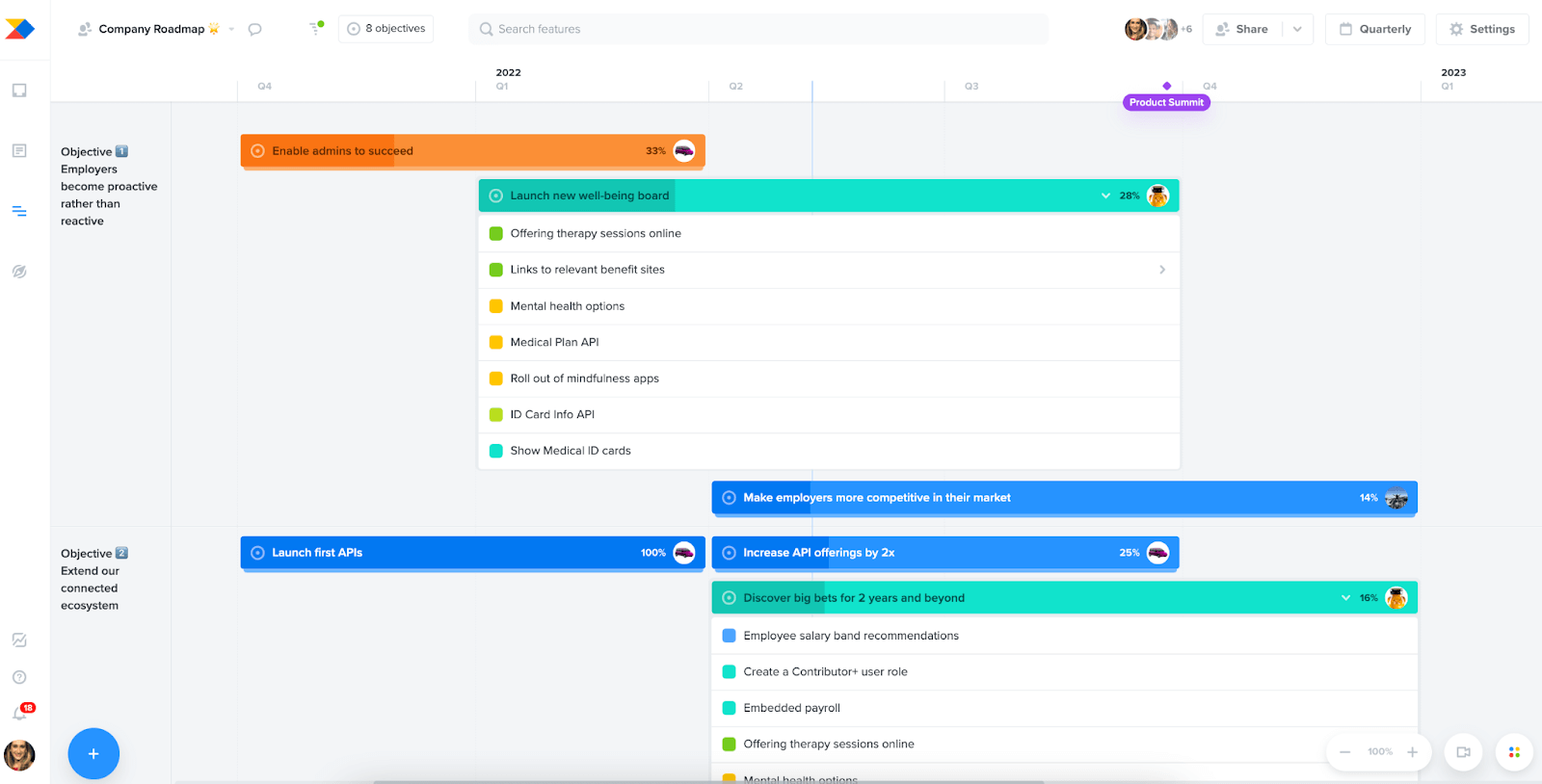
Figure 1.4
Once that’s confirmed, product teams will begin a thorough prioritization process. In short, Lalonde says, features are prioritized based on a number of concerns:
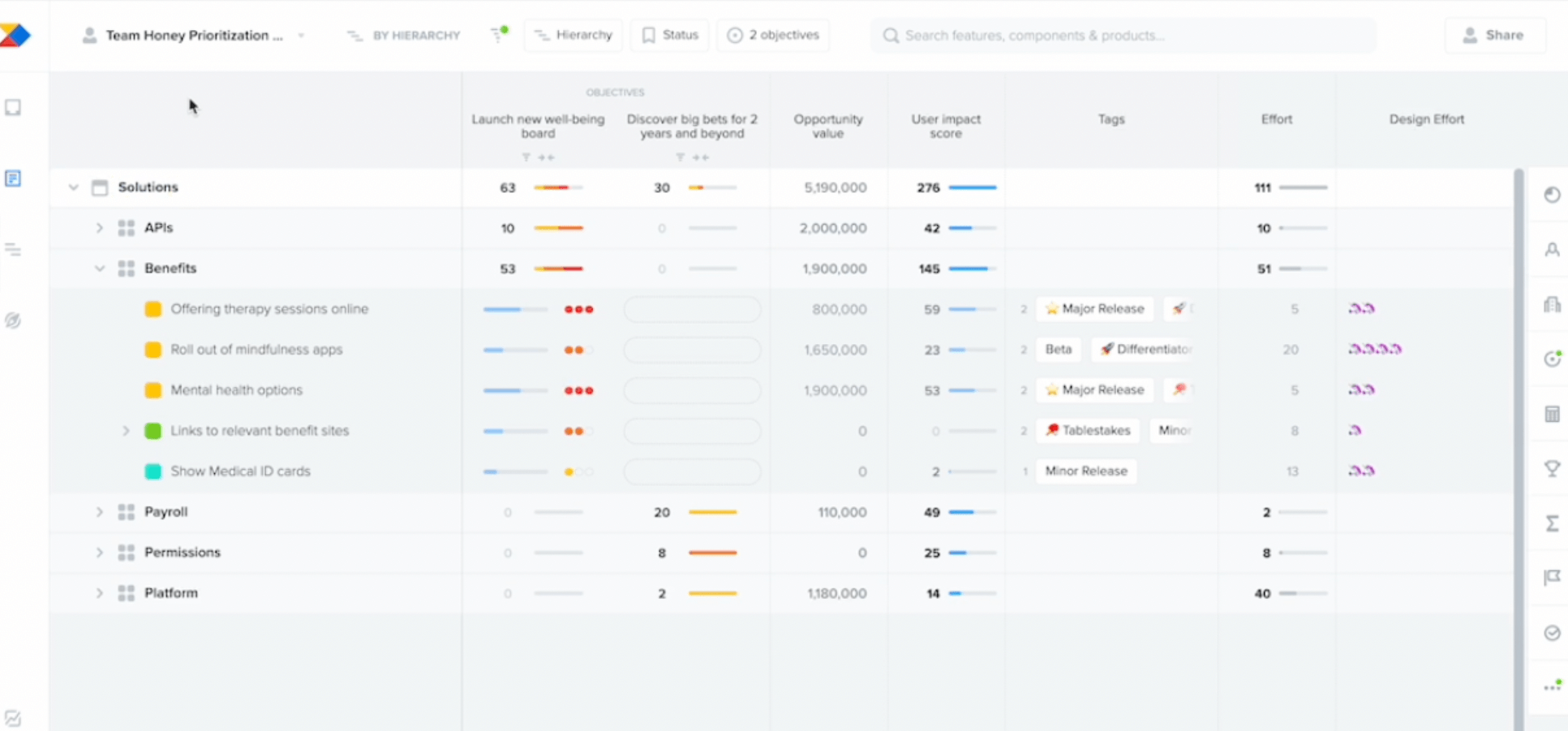
Prioritizing against objectives while also considering user impact score allows Productboard to marry business value and customer value together – in fact, attributing a lot of the company’s annual growth to being truly empathetic to customers and really hearing what their problems are.
For a quick snapshot into the tradeoffs between effort and value, Lalonde said, product teams and product leaders alike view the Prioritization Matrix (Figure 1.5).
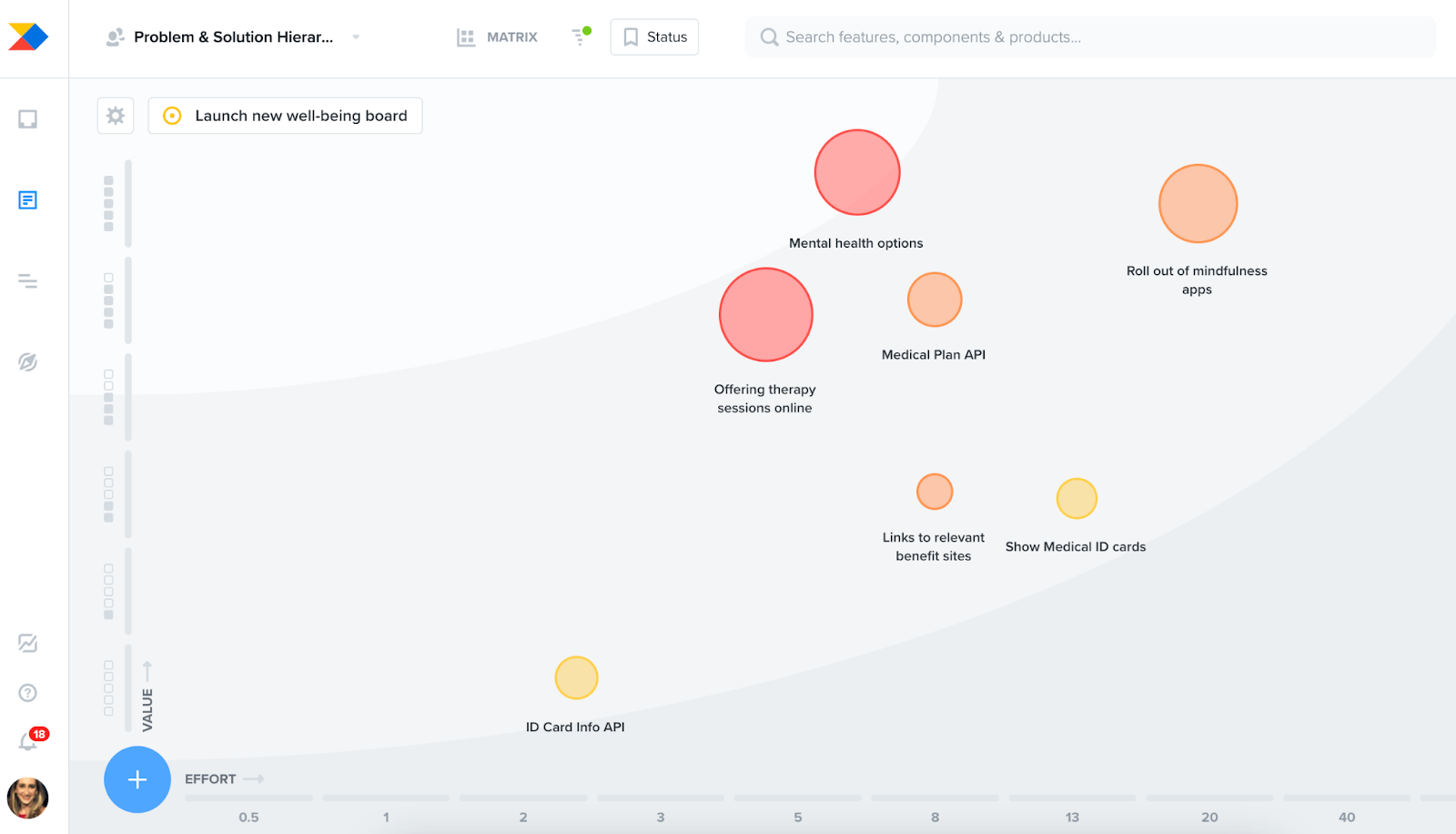
Figure 1.5
Last, but certainly not least, the Productboard team is ready to launch the carefully prioritized solutions.
The team sequences their features into three buckets on a Features board: now, next, and later (see Figure 1.6). This helps prioritize tasks for earlier features first. Additionally, each feature clearly displays the product owner, designer, and grooming engineer, so that the relevant people have visibility and can work on their assigned tasks. Using this view and referencing the roadmaps within Productboard, allows the team to understand best which product managers are working on what, when it will be delivered, and reduces time-consuming meetings for status updates.
In fact, Lalonde alone saves hours per week with Productboard and can plan her product launch and enablement activities accurately.
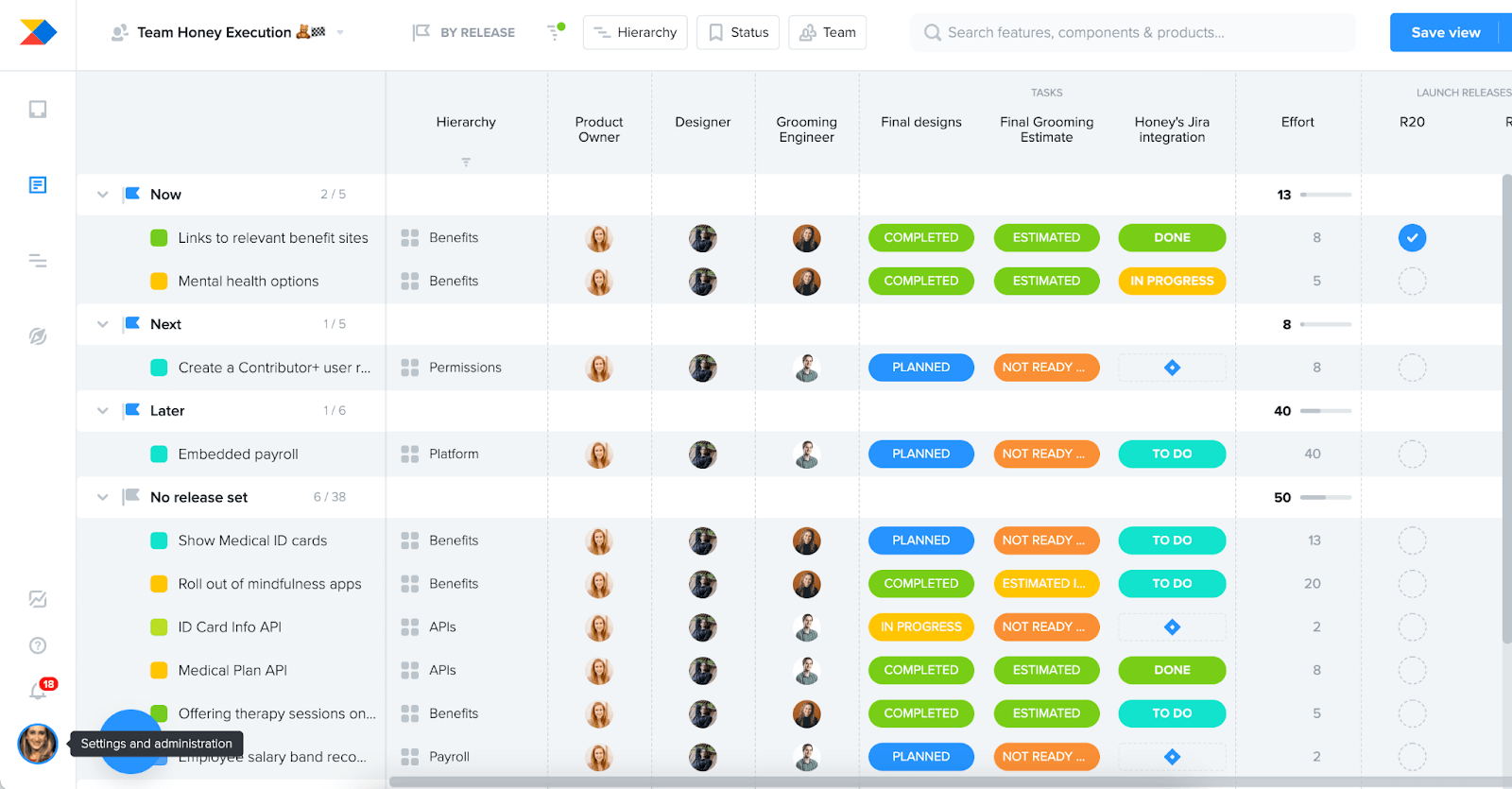
Figure 1.6
The product team can conveniently include a wide variety of product specs within feature details: context/problem, user stories, acceptance criteria, pricing, and even notes on what’s considered out of scope. A comment section lets users collaborate by talking and tagging relevant stakeholders.
The final grooming task for the Productboard team is pushing the feature to Jira, where it will live as an epic and has a two-way status sync with Productboard.
“ Productboard’s own Growth Engineering Lead Alex Marinko shares, “before PB, I lived in Jira and had no context into what we were building. I felt like a features factory. Now, I get to take part in the design process. ”
With the provided context and insights from Productboard, engineers can make faster decisions autonomously, which removes never-ending back and forths and leaves them empowered to propose new and creative solutions that may be outside what PMs come up with on their own.
Feature details and timeframes from the Features Board automatically update on the Roadmap, which the product team then uses to track their features in progress and stay on task, easily adjusting timing as necessary.
“If you’re thinking, ‘Hey, it’s gonna take us a little more time to deliver this,’ you could just drag [the timeline] over a bit and you’ll change the duration,” Lalonde said.
Product is so much more than execution; it’s better to execute poorly on the right product than execute perfectly on the wrong one. At least in the former scenario you can improve it. If you are an individual contributor and see your org cares more about execution, manage up and across by creating Productboard views of customer feedback and prioritization. If you are a product leader, ensure that your teams are seeing the forest through the trees by uncoupling solutions from problems.
Want more where this came from? Check out the recordings from our 2022 Product Makers Summit!
